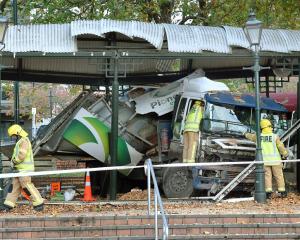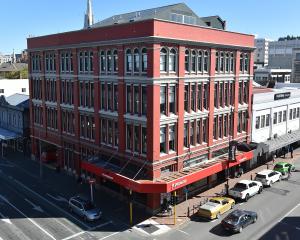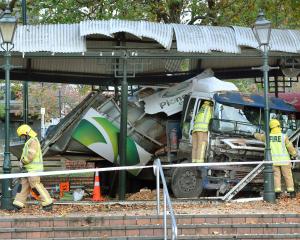A massive budget blowout could be in store if Dunedin is to get the complete cycle network it was promised, it has been revealed.
Future cycleway builds in the city were likely to cost ''three to four times'' more per metre than first thought, meaning lucrative Government grants might not be available for much of the network.
The revelation was delivered at yesterday's Dunedin City Council infrastructure services committee meeting by council infrastructure and networks general manager Ruth Stokes.
The type of cycleways Dunedin wanted, and the type council staff believed were best for the city, were of a higher quality than many which had been planned and built to date, she said.
Experience gathered from the controversial South Dunedin Cycleway Network had shown the public wanted and used the high-quality shared pedestrian/cycle paths that had been built in Victoria Rd, Royal Cres and Portsmouth Dr.
Adjusting plans to ensure all of the city's future cycle networks were of higher quality had resulted in the sharp rise in estimated costs, she said.
The result was Dunedin's central-city cycle network, which had been budgeted to cost $9.4 million, would now cost ''significantly'' more.
That network included:
• Connections from the one-way system's cycle lanes being built by the New Zealand Transport Agency to George St, Logan Park, the university and other central-city areas.
• A city-to-harbour link, likely to be either a bridge or underpass, possibly near the Dunedin Chinese Garden.
• The Northeast Valley cycleway.
''We now know that a per-metre cost is three to four times what we thought it might be in 2011,'' Mrs Stokes said.
That meant there was no way all three parts of the central-city package could be completed within the budgeted $9.4 million.
Staff had prioritised the ''connections'' part of the plan as being most important, and estimated that section alone would now cost $9.25 million.
''We're going for the principle of let's do one thing and let's do it right.''
The flipside, though, was that the funding for the other two sections of the central-city cycle network were now not budgeted for.
The original budget included a $3 million grant from the Government's Urban Cycleways Fund, which would now be used entirely for the central connections.
The other $6.25 million would be joint-funded by the DCC and NZTA at a ratio of 41% for the DCC, and 59% for the NZTA.
Those ratios would change next year to 42% and 58% respectively.
Mrs Stokes said there was now a risk the harbour link and the Northeast Valley cycleway might not attract grants from the Urban Cycleways Fund, leaving them funded entirely through the DCC and NZTA joint funding model.
However, she hoped the Government would continue to prioritise cycling infrastructure and, if such funds continued to exist, applying for them would be an option.
''But we don't know how long that funding will be available for.''
What was certain was that the cost of the cycle network would be more than first thought, and the extra cost to ratepayers would need to be debated in the future, Mrs Stokes said.
''That's why we're bringing it to the councillors' attention now. With everything that's been learned, we need to be realistic up front.''
Councillors voted unanimously in favour of the move to focus funds on the central connections plan, although Cr Lee Vandervis noted his support was due to the included proviso that the council could opt out of the scheme at any time.
While time frames for when work could start were only ''indicative'', it was thought work would begin next year and be completed within three years.












